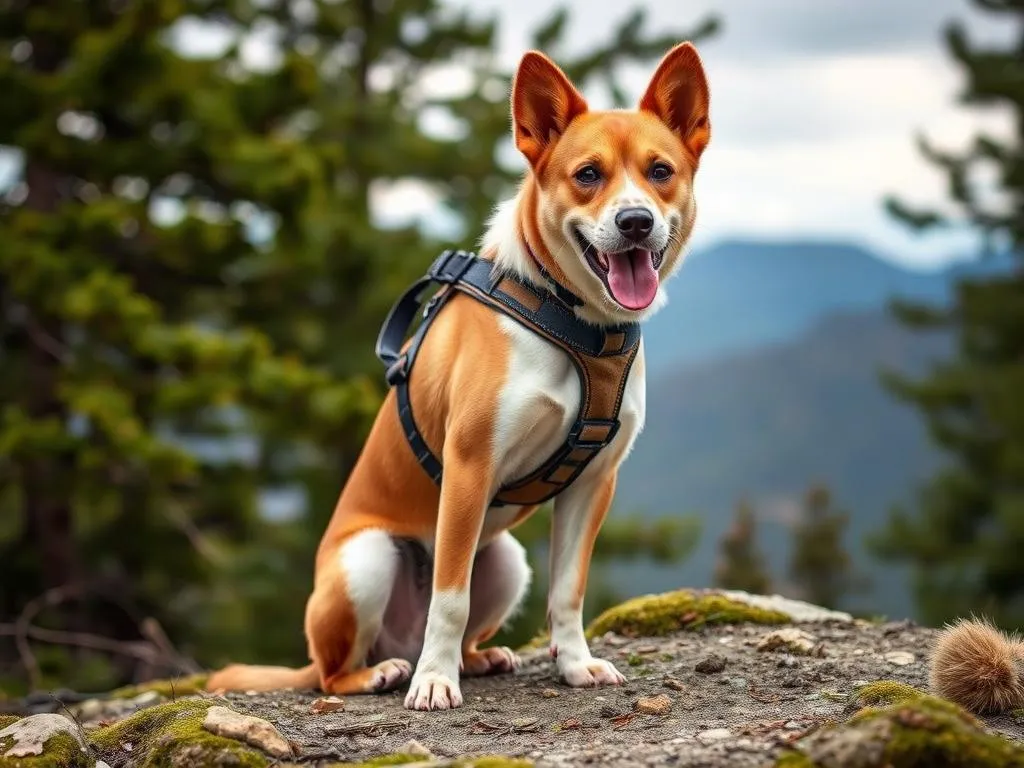
Introduction
Choosing the right dog harness for hiking is essential for ensuring the safety and comfort of your furry companion. A good harness not only enhances control during challenging terrains but also minimizes the risk of injury to your dog’s neck. Whether you’re traversing rocky paths or enjoying a scenic trail, the right harness can make all the difference. In this guide, we will explore why using a harness is crucial for hiking, the key features to look for, a selection of the best dog harnesses for hiking, and tips for fitting and hiking with your dog.
Why Use a Harness for Hiking?
Safety Benefits
One of the most significant advantages of using a harness is the added safety it provides. A well-fitted harness gives you better control over your dog, especially in rugged environments where they might be tempted to dart off or explore. Harnesses are designed to prevent escapes, which is particularly important in areas with steep drops or tricky terrain. Additionally, they reduce the risk of neck injuries that can occur with traditional collars, especially if your dog tends to pull or lunge.
Comfort and Fit
Comfort is another vital aspect of a dog harness for hiking. A properly fitted harness distributes pressure across the dog’s body rather than concentrating it on the neck, which is especially beneficial during long hikes. Unlike collars, which can cause chafing and discomfort, harnesses are designed with padded straps that help keep your dog comfortable, allowing them to enjoy the hike just as much as you do.
Support for Different Dog Sizes and Breeds
Different breeds and sizes require different harness styles. Whether you have a tiny Chihuahua or a large German Shepherd, there are harnesses tailored to meet their unique needs. Choosing the right harness for your dog’s size ensures optimal support, allowing them to navigate various hiking conditions with ease.
Key Features to Look for in a Dog Harness for Hiking
Material and Durability
The material used in a dog harness for hiking can significantly affect its performance. Look for harnesses made from high-quality, durable materials that can withstand the elements. Weather-resistant fabrics will help protect against rain and mud, while reinforced stitching will enhance durability. This is especially important for frequent hikers, as a robust harness will stand the test of time.
Adjustability and Fit
A harness that offers adjustable straps is crucial for achieving the perfect fit. A well-fitted harness should allow you to snugly secure it without causing discomfort. To ensure your dog is comfortable and safe, measure their dimensions and choose a harness that allows for some adjustability.
Padding and Comfort
Padded straps and chest panels are essential features of a great hiking harness. These elements prevent chafing and discomfort during long hikes, allowing your dog to focus on enjoying the adventure rather than dealing with irritation. Look for harnesses that include breathable padding to enhance comfort.
Leash Attachment Options
The type of leash attachment points can impact your hiking experience. Many harnesses offer both front and back attachment options. A front clip can help discourage pulling, while a back clip is great for more relaxed walks. Depending on your dog’s behavior and hiking style, choose a harness that best suits your needs.
Visibility Features
Safety is paramount when hiking, and visibility features can make a significant difference. Look for harnesses that incorporate reflective materials or bright colors, ensuring your dog is visible during low-light conditions. This is especially important if you plan to hike during dawn or dusk.
Top 5 Best Dog Harnesses for Hiking
Harness #1: Ruffwear Front Range Harness
Features and Specifications
– Made from durable, weather-resistant materials
– Two leash attachment points (front and back)
– Padded chest and belly panels for comfort
– Multiple color options available
Pros and Cons
– Pros: Excellent for pullers, comfortable fit, adjustable
– Cons: May be pricey for some
Ideal Dog Type and Size
Best suited for medium to large breeds.
Harness #2: Kurgo Tru-Fit Smart Harness
Features and Specifications
– Crash-tested for car safety
– Adjustable straps for a perfect fit
– Padded chest for added comfort
– Includes a seatbelt tether
Pros and Cons
– Pros: Versatile for car rides, easy to put on
– Cons: Some users report issues with sizing
Ideal Dog Type and Size
Suitable for small to large dogs.
Harness #3: PetSafe EasySport Dog Harness
Features and Specifications
– Lightweight and breathable material
– Easy to put on and adjust
– Reflective strips for visibility
– Available in various sizes
Pros and Cons
– Pros: Affordable, lightweight, good for everyday use
– Cons: Less padding than some other options
Ideal Dog Type and Size
Great for small to medium-sized dogs.
Harness #4: Julius-K9 IDC Powerharness
Features and Specifications
– Robust construction ideal for strong dogs
– Adjustable straps for a custom fit
– Comes with a detachable patch for identification
– Reflective edges for visibility
Pros and Cons
– Pros: Extremely durable, comfortable, good control
– Cons: Might be bulky for smaller breeds
Ideal Dog Type and Size
Best for medium to large breeds, especially strong pullers.
Harness #5: Eagloo Dog Harness
Features and Specifications
– Made of soft, padded material
– Adjustable straps for a secure fit
– Front and back leash attachment options
– Reflective stitching for enhanced visibility
Pros and Cons
– Pros: Budget-friendly, comfortable, easy to clean
– Cons: Some reports of durability issues over time
Ideal Dog Type and Size
Suitable for all sizes, particularly medium-sized dogs.
How to Properly Fit a Dog Harness
Step-by-Step Fitting Guide
-
Measuring Your Dog’s Dimensions: Use a soft measuring tape to measure around your dog’s chest (the widest part) and neck. Record these measurements for reference when selecting a harness.
-
Adjusting Straps for a Secure Fit: Put the harness on your dog and adjust the straps. Ensure there is enough room for two fingers to fit between the harness and your dog’s body, which indicates a secure but comfortable fit.
Testing the Fit
-
Signs of a Well-Fitted Harness: The harness should sit snugly without slipping off or causing discomfort. Your dog should be able to move freely without restriction.
-
How to Spot a Poorly Fitted Harness: If the harness slides around, causes chafing, or restricts movement, it’s essential to re-adjust or consider a different size or model.
Tips for Hiking with Your Dog
Preparing Your Dog for Hiking
Before setting out on a hike, it’s important to prepare your dog. Gradually introduce them to the harness, allowing them to wear it at home for short periods before adding it to outdoor adventures. This will help them become accustomed to the feel of the harness.
Essential Hiking Gear for Dogs
Aside from a good harness, consider additional gear such as:
– Dog Booties: Protect their paws from rough terrain.
– Water Bottles: Keep your dog hydrated during hikes.
– First Aid Kits: Be prepared for any minor injuries on the trail.
Hiking Safety Tips
-
Hydration is Key: Ensure your dog has access to fresh water throughout the hike. Carry a portable water bowl for convenience.
-
Watch for Signs of Fatigue: Keep an eye on your dog’s energy levels. If they show signs of fatigue or distress, take a break.
Conclusion
Choosing the right dog harness for hiking is crucial for the safety and comfort of your beloved pet. With a variety of options available, it’s important to consider the features that best suit your dog’s needs and the hiking conditions you’ll face. Try out the recommended harnesses and see how they enhance your hiking experiences. Your dog deserves the best, so prioritize their comfort and safety on your adventures together.
FAQs
Can any harness be used for hiking?
While many harnesses can technically be used for hiking, it’s best to choose one designed specifically for outdoor activity to ensure durability and comfort.
How do I clean my dog’s harness?
Most dog harnesses can be cleaned with mild soap and water. Check the manufacturer’s instructions for specific care guidelines.
What if my dog doesn’t like wearing a harness?
Start by letting your dog wear the harness indoors for short periods. Gradually increase the duration and associate it with positive experiences like walks or playtime.
Are there harnesses specifically for large dogs?
Yes, many brands offer harnesses designed specifically for large breeds, ensuring they provide the necessary support and comfort.
With the right harness and preparation, you and your dog can enjoy countless adventures together. Happy hiking!









